Innovate Montana: Nonprofits at the Table
by Liz Moore, MNA Executive Director
Two weeks ago I attended the Innovate Montana Symposium in Billings. Most of the attendees were from the for-profit sector. The public sector was well represented with Department of Commerce, Labor, the Governor’s Office of Economic Development and others. I was there to immerse myself in the concept of innovation and entrepreneurship from a nonprofit perspective, especially as it pertains to next generation leadership in the nonprofit sector.
Toward the close of the event, I asked one of the presenters about the extent to which he found nonprofits to be innovative. Although not his exact words, I heard him say something to the effect that innovation is primarily within the purview of the private sector, with nonprofits being too driven by fundraising and the issues immediately in front of them to be innovative. I was taken aback and thought his response was short-sighted and misinformed, but I also wondered what I could learn from it. Today, here are my thoughts.
The comment I heard at the symposium was not a one-off. There is a perception expressed by many in the for-profit arena that nonprofits are not innovative, current or relevant. This is especially true for younger people entering the workforce. Last summer a college intern told me he thought nonprofits wouldn’t be around in ten years because they are outdated and being replaced by for-profit businesses who are doing the same things, only better. I’ve heard young people frustrated with the slow pace and resistance to change they experience in the sector.
At the same time, nonprofit leaders, including myself, have a very different perspective. Many in the nonprofit sector firmly believe nonprofits are the most innovative, adaptable, and responsive organizations out there. We are flexible in response to community needs, nimble in the face of change, and creative with resources.
To understand why there are such differences of opinion, it’s important to start with what innovation actually is. It can be defined in about a hundred different ways, but the definitions I read focused on generating and implementing new and creative ideas that increase value to customers, the relevance of the business, and generate revenue.
This definition uses different language than nonprofits typically use. For example,
- Rather than increasing value to customers, nonprofits talk about achieving outcomes;
- Nonprofits are more familiar with increasing impact than increasing relevance;
- Both the nonprofit and for-profit sectors must generate revenue, but for nonprofits, this is a component of sustainability, not a bottom line indicator of success.
And there are other differences that bear on innovation. Nonprofits and for-profits alike continuously respond to changes in the operating environment. However, many nonprofits are more likely to be most directly impacted by public policy changes, federal and state budgets, and the well-being of their constituents than they are by market trends, rapidly changing technology, and consumer interests. Obviously this is not true across the board, but you get the point.
Another difference is risk tolerance. Innovation is risky. This is a tough one for nonprofits, who find ourselves somewhat risk averse due to funding mechanisms. With little discretionary income or expendable capital – it is difficult to take significant creative risks, and that is reflected in the degree to which we can innovate. We are tremendously creative, adaptive and flexible; but developing new products and services often takes capital we simply don’t have, requiring us to make more incremental change.
Bottom line: innovation is as central to and as prevalent in successful nonprofit organizations as it is for-profit businesses. But it looks and sounds different in our sector than in the private sector. And here’s the challenge for nonprofits: we are fighting a stereotype. The incoming workforce is most at home in an environment characterized by inquiry, rapid changes in strategy and technology, and continual pivoting and adaptability in the face of consumer demand. The more that nonprofits can cultivate these qualities as part of the organizational culture, the better positioned we will be as employers of choice. A focus on innovation does not supplant focus on mission; instead, it should accelerate advancements toward the mission. Imbedding imaginative problem solving into our organizational culture, increasing rapid response to change, evaluating relevance in addition to impact, and positioning the organization to take calculated risk are ways to amp up an innovative workplace.
There was a sense of vitality and imaginative spark at the Innovate Montana Symposium that I appreciated. The generations now entering the nonprofit workforce bring tremendous gifts; they want to do meaningful work, and they are energized by a work environment that is adaptive, creative, and nimble. As we invite next generation leaders into our organizations as staff and board members, nonprofits that embody a dynamic and innovative culture will not only be positioned best to meet community and societal needs, but will also have the advantage of attracting the best talent. Someone recently said to me, “It’s not enough to be current. You want to be on the forefront.” Innovation not only helps nonprofits adapt today, it puts us on the forefront, positioned to advance our mission into the future.
A final thought: nonprofits need to be at the table at a statewide level as we talk about innovation in Montana. Let’s make it unthinkable that an entire sector would be dismissed with a casual comment by a speaker at a forum on innovation. Montana’s economic strength depends on a strong nonprofit sector – not just because of the 53,000 employees working in the sector or the fact that we are more than 11% of the wage base. We are a major driver in why businesses and people locate in the state. A thriving arts scene, a wild and beautiful environment, strong sense of community and local toughness . . . these are reasons people fall in love with Montana, and nonprofits are major contributors. Innovation by its very nature is remarkably individualized to a given company, organization or sector. We’ll get further as a state if we understand, invite and appreciate differences in innovation rather than using a one-size-fits-all approach.

 Innovate Montana: Nonprofits at the Table
Innovate Montana: Nonprofits at the Table